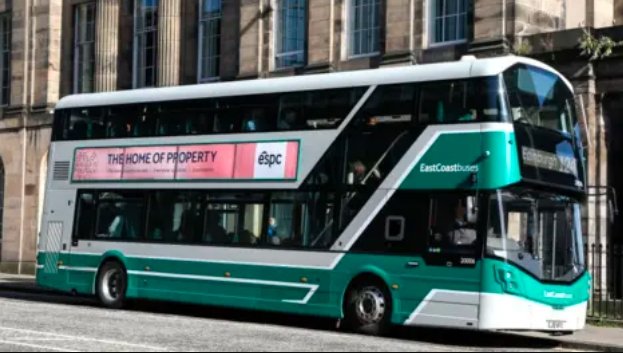LONDON/EDINBURGH — England and Scotland are setting the pace in reshaping how young people access education, employment, and social opportunities, using free bus travel as a lever for greater mobility and inclusion.
The push is clear: remove the cost barrier, and a world of options opens up.
Scotland’s Head Start
Scotland has been running its free bus travel scheme for residents aged 5–22 since January 2022, a move widely credited with boosting youth travel, linking rural and urban communities, and cutting transport-related exclusion.
Transport Scotland data shows a steady increase in bus usage among younger passengers, reversing a pre-2022 decline. For many in rural areas, the policy has been transformative — allowing them to reach colleges, jobs, and cultural hubs without worrying about ticket prices.

England Eyes a Pilot
In Westminster, MPs are pressing for England to follow suit with a similar model. The call is for a pilot scheme granting free all-day bus travel to under-22s, with the aim of breaking down what they describe as a “persistent mobility wall” for young people in smaller towns and rural regions.
“We know cost is a major barrier,” said one Transport Committee member. “If Scotland can show results, there’s no reason England can’t adapt the model.”
The proposal arrives as the Department for Transport commits £1 billion in multi-year funding to improve bus reliability and frequency nationwide. While the focus is currently on service quality, campaigners argue that affordability must be addressed alongside it.
The Numbers Behind the Decline
Bus usage in England has been falling for more than a decade:
| Year | Annual Passenger Journeys (Billion) |
|---|---|
| 2009 | 4.6 |
| 2024 | 3.6 |
The drop — nearly 22% — has been most pronounced in rural areas, where reduced services and higher fares have compounded access problems.
A 2019 study revealed that 57% of jobseekers could not reach employment centres by bus within 45 minutes. The impact on younger people is particularly acute, limiting both career and education opportunities.
Cost Pressures on Young Commuters
For students and those in low-income households, bus fares can be a significant weekly outlay. A typical commuter relying on two bus connections to reach a university or workplace might spend upwards of £25–£35 per week.
Some youth organisations say this cost forces young people to make difficult trade-offs — between attending classes, taking on work shifts, or engaging in social and extracurricular activities.
Scotland’s Evidence Base
Scotland’s early results are being closely watched in Whitehall. Initial findings suggest that removing fare costs has not only increased travel frequency among young people but also encouraged greater participation in training and volunteering.
Rural communities have reported improved access to secondary schools, further education colleges, and part-time job opportunities in nearby towns. This, advocates say, has a knock-on effect on economic participation and local vitality.
The Economic Ripple Effect
Bus passengers play a quiet but vital role in the economy. According to Transport Committee estimates, they spend £39.1 billion annually in local businesses. But the sector’s overall contribution has dropped by £8.9 billion between 2011 and 2023, partly due to route cuts in the deregulated market.
When commercial operators withdraw from less profitable areas, entire communities can lose essential connections — a problem felt most by those without access to cars.
More Than a Ride: Tackling Social Isolation
Transport policy experts note that the benefits of free bus travel extend beyond economic metrics. Reliable and affordable services can help reduce social isolation, especially in rural towns where opportunities for face-to-face interaction are limited.
The Transport Committee also flagged safety concerns for certain demographics — particularly older passengers — who may avoid buses if stops feel unsafe, especially after dark. Recommended investments include:
-
Better-lit shelters
-
Real-time arrival boards
-
Secure seating areas
Such upgrades, they argue, would benefit all passengers, not just younger ones.
Challenges Ahead
While Scotland’s programme offers a promising model, there are questions about funding sustainability, particularly if England adopts a similar approach. The Scottish Government funds its scheme through direct subsidies to operators, offsetting fare income losses.
Critics in England warn that without long-term funding guarantees, free bus travel could be undermined by service cuts, reducing the very access it is meant to enhance.
Still, momentum is building. With cross-party MPs voicing support, and Scotland offering a working example, the political calculus may be shifting toward a more ambitious youth mobility agenda across the UK.


















